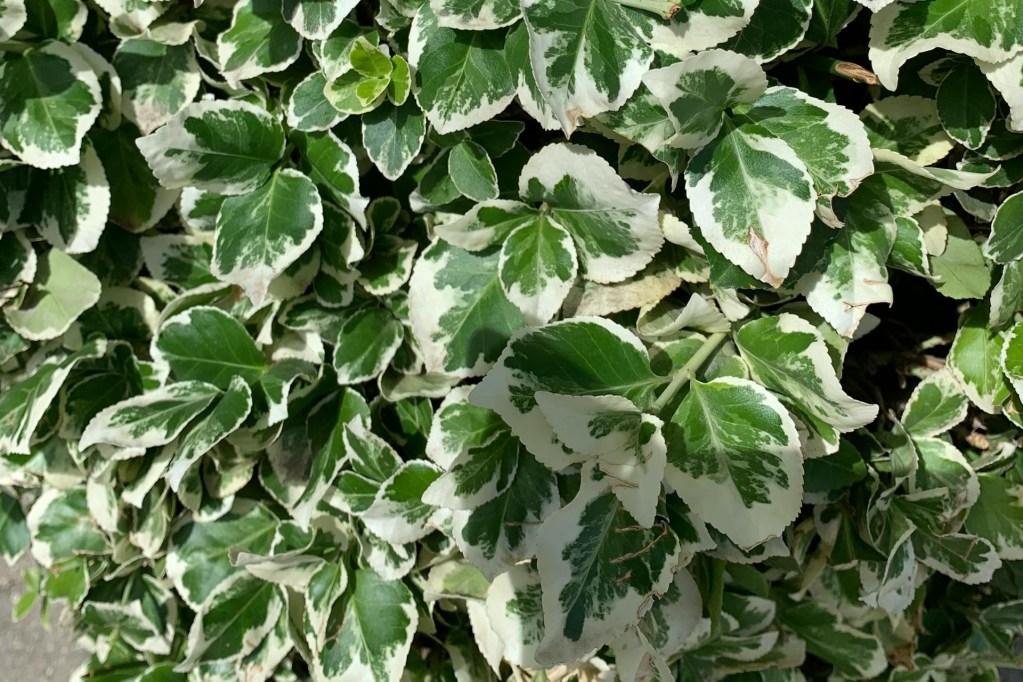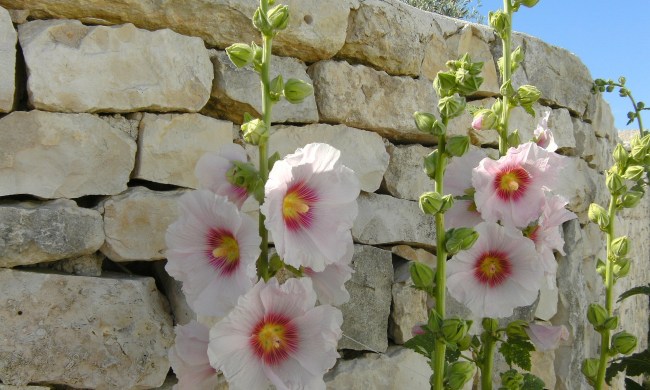If your winter landscape is looking a bit empty, you might be on the hunt for some beautiful evergreen plants to fill the space. There are many gorgeous evergreen plants to choose from, including trees like various types of pine and smaller shrubs such as holly. One plant you may have heard of is wintercreeper. If you’re not familiar with this plant and are wondering what it is and how to grow it, then you’re in the right place. This guide to wintercreeper care will answer all your questions about growing wintercreeper indoors and out.
What is wintercreeper?

Wintercreeper, also called fortune’s spindle or Euonymus fortunei, is an elegant evergreen vine with solid green or variegated green and white or yellow foliage. It grows quickly and can be trained to grow over a trellis, up a wall, or as a ground cover. This creates a beautiful display of densely growing vines and leaves, which is great for filling space. As a groundcover, it requires less maintenance than grass lawns, and the durability of the vines is a highlight for many gardeners.
However, this quick, dense growth does come with a downside. Wintercreeper is invasive, and it can quickly spread out of control. There are steps you can take to minimize the spread, but it does require more careful planning and maintenance than growing a native plant. If you’re concerned about your wintercreeper escaping, then you may want to opt for a native alternative instead.
Planting wintercreeper

You can begin planting your wintercreeper in mid to late spring and plant it as late as early fall. If you live somewhere with mild winters, you may be able to plant it later, but be sure it has plenty of time to establish itself before the first freeze. Rich, slightly acidic, well-draining soil is ideal for wintercreeper plants, but they can tolerate other soil types as well. Avoid planting them in slow-draining soil, as they can develop fungal infections if left in wet soil for too long.
Plant wintercreeper in full shade to full sun, depending on the variety. Solid green wintercreeper plants are more shade tolerant, while yellow or variegated wintercreeper varieties need more sun due to having less chlorophyll in their leaves.
Be sure to give your wintercreeper room to grow or something to climb over, such as a trellis, arch, or wall. Otherwise, it can crowd your other plants or climb into places you don’t want it to be.
Wintercreeper plant care

Water your wintercreeper regularly for the first few months after planting. Let it dry in between waterings to avoid overwatering it. Once it’s fully established, wintercreeper is drought tolerant and will only need water during prolonged periods of hot, dry weather. Similarly, wintercreeper doesn’t need regular fertilization. Unless your soil is naturally poor, your wintercreeper plant should do just fine without assistance. If you do fertilize your wintercreeper, choose a balanced fertilizer and stick to small or diluted doses.
Regular pruning is the best way to control your wintercreeper and keep it from spreading. This plant primarily spreads through its vines, which will put down tiny rootlets where they touch the ground. Once they put down roots, it’s harder to get rid of them, so monitoring your wintercreeper and snipping unruly vines before they reach this stage is crucial.
Can you grow wintercreeper indoors?

Wintercreeper plants can grow in containers and indoors, and most of their care remains the same. They need a container with drainage holes and rich, well-draining soil. Place them in a sunny window with bright, indirect light, or choose a non-variegated variety for a shadier room.
Water your indoor wintercreeper when the soil is dry, and give it a light dose of fertilizer in the spring. Indoor wintercreeper plants still need to be pruned to keep them from spreading, but it isn’t quite as dire since you don’t need to worry about them putting down roots unless you have other potted plants nearby.
Native alternatives to wintercreeper

Despite being beautiful, wintercreeper is unfortunately invasive. If you don’t plan on growing your wintercreeper in a container and want an easier way to keep an invasive plant from spreading out of control, you might want to consider switching to a native plant instead. Other native evergreens you can add to your garden include many types of holly and juniper, as well as sweetbay magnolia, mountain laurel, sedum, and green-and-gold.
While there are plenty of evergreen shrubs to choose from, if you want a vining display like wintercreeper would give you, then look for these evergreen and semi-evergreen native vines.
- Evergreen smilax
- Creeping mahonia
- Crossvine
- Coral honeysuckle
Wintercreeper plants are beautiful and low-maintenance choices, and their leaves look striking all through winter. They require little care aside from what is necessary to control their spread, and you can even grow your wintercreeper indoors. Of course, if you prefer native gardening, there are also native alternatives you can plant instead.




